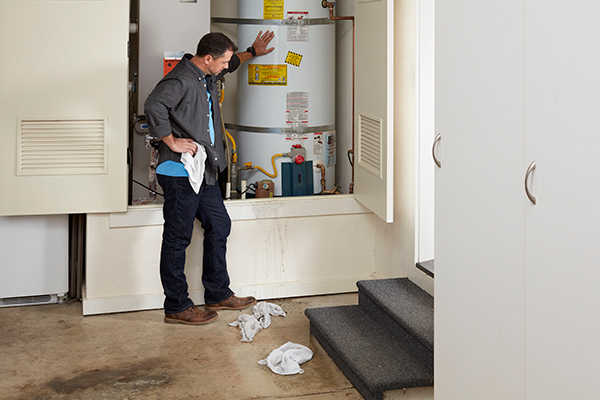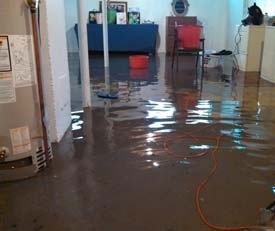Everyone may have their personal assumption when it comes to What Do You Do When Your Water Heater Bursts?.

Whether it lies in the basement or a different space, broken water heaters can create anxiety. A basic system holds 80 gallons, so an overnight leak will bring about a flooding. This leads to major residential property damage with soaked walls and also floorings. Having no hot water supply is additionally troublesome. If you are taking care of these concerns, keep in mind of the following:
Call the Plumber
After doing the first 2 safety actions, you need to call your plumber ahead right now to repair a ruptured water heater. Nevertheless, bear in mind that your device will certainly not simply conk out substantially overnight. There are generally indications that your aging water heater has debris accumulation in the inside. Take note of the following:
- Rusty water originating from the hot water tap
- Strange noises from within that show sedimentation
- Dripping links
- Pooled water under the tank because of small pinholes
- Rather, as quickly as you find these indicators, have a professional come to check your water heater container. Generally, water heating systems have a life expectancy of concerning 8 to 12 years.
Cut Off the Cold Water Supply
Cut off the storage tanks faucet water supply from the resource. This goes from your main water line right into the container. When your tank is in good condition, the cold water quits filling when the container is full. Since it is dripping, the water will certainly proceed to move. Shut the shutoff located at the top of the heating system. Revolve this clockwise to close it off. You should turn off that major water supply line outside your property if you can not locate it or reach it.
Shut Down Source Of Power
Before calling the plumber, shut down a gas hot water heater by transforming the temperature level dial. This is normally located at the top of the thermostat. Change off the circuit breaker if you have a model that runs on electric power. This will stop electrocution, especially if there is a leak as water is a conductor. Normally, the heating element shuts off when the water hits a particular temperature level. However with a broken tank, it may malfunction. Cutting it off guarantees you remain risk-free.
Clean Up Home
After calling the plumber, file damages by making note as well as pictures so you can declare your property owner's insurance policy. From there, start the instant cleaning. Get any type of important personal belongings to prevent additional saturating. Remove any standing water to avoid mold and also mold growth. If you have a completely submersible water pump, make use of that to drain the water. Or else, the conventional container approach will certainly additionally work. Attempt to wipe out every little thing, including baseboards and also walls. Maintain them running to keep air distributing if you have an electrical fan and dehumidifier. This will certainly help hinder mold growth.
Remember, if you discover any type of concerns with your hot water heater, call the pros immediately. You can not take this issue gently due to the fact that a faulty thermostat can elevate water temp to an alarmingly high degree, causing unexpected burns. A damaged heater stress relief valve can additionally trigger a surge. For ideal results, get a yearly check so your device obtains inspected, cleaned up, drained, as well as replenished, ensuring optimum efficiency.
After doing the first 2 security steps, you have to call your plumber to come right away to take care of a ruptured water heating system. Instead, as quickly as you find these indications, have actually a specialist come to evaluate your water heating unit container. Prior to calling the plumber, closed off a gas water heating unit by turning the temperature dial. If you have a completely submersible water pump, utilize that to drain pipes the water. Keep in mind, if you see any type of concerns with your water heating system, call the pros right away.
8 REASONS YOUR HOT WATER HEATER IS NOT WORKING & HOW TO FIX
Water Heater Problems & Solutions
Loose or Damaged In-Line Valve
Unlike a water leak near the bottom of your water tank, a water leak on top of your system can be easily fixed. A common cause of water tank leaks includes a loose in-line valve. This is a handle that is located at the top of the water tank that is engineered to activate or deactivate the flow of water. To fix this problem, you will need to secure the nut that holds the ball or in-line valve in its location. If the leak becomes more severe once it is tightened, you will be required to travel to your local hardware store to purchase a new in-line valve for your water heater.
Damaged Pressure Relief Valve
Most types of water heaters are equipped with a pressure relief valve that is engineered to discharge pressure from the water tank when it becomes too high. If this valve on top of your water heater begins to leak, we recommend purchasing a new one online or from your local store. The process of removing and replacing pressure relief valves is not complicated.
No Warm Water
If you have an electric water heater in your home, the most typical cause of a lack of warm water is a broken heating element. Your water heater is equipped with two heating elements that are tasked with heating incoming water in the water tank. Once a heating element begins to malfunction, you will have little to no hot water to use for showering, cleaning, and laundry.
Low Supply of Hot Water
Are you continuously running out of warm water? This issue may be a byproduct of a cracked dip tube. This tube is engineered to push cold water to the base of your water tank to be heated. Once a crack or hole begins to form in the dip tube, the incoming supply of cold water may be released near the top or middle of your tank. As a result, the cold water on top of the tank will be sent to the faucets and showers in your house. This hot water heater problem can only be fixed by replacing the dip tube on your system. Since the process of installing a new dip tube is complex, we recommend calling a certified technician for help.
A low supply of warm water may also be a signal of excess sediment buildup in your water tank. As your water heater reaches the middle of its life cycle, minerals in water including magnesium and calcium will begin to collect at the base of the water tank. As the minerals continue to grow, there will be less room in the water tank to store hot water. To resolve this problem, flush your water heater to remove the excess minerals.
Water is Too Warm or Cold
If the water in your shower feels uncomfortable hot or cold, you can adjust the temperature of your water by changing the settings on your thermostat. Setting the temperature to 120 degrees Fahrenheit may help you save money on your utility bills. This is an excellent temperature to use if you’re worried about scalding or skin irritation. Does this temperature feel too cold? You may also adjust the thermostat to 140 degrees Fahrenheit to make your showers more pleasant. If your hot water heater is not working when you change the temperature, this is an indicator of a broken thermostat. Immediately find a certified plumbing or heating contractor in your area to repair or replace your thermostat.
Low Water Pressure
Low water pressure is not always caused by a malfunctioning water heater. If you live in an older home with smaller water pipes, the flow of water will be restricted prior to reaching our kitchen or bathroom skins. The only way to eliminate this hot water heater problem is to connect new ¾-inch water lines to your system. Another type of problem that may negatively impact your water pressure includes calcium deposits in water pipes.
As magnesium and calcium begin to form in your pipes, the diameter of your water lines will become smaller. As a result, the warm water from your water heater will not be able to travel in an efficient manner to your sinks or appliances. Since the process of replacing water pipes includes removing drywall, an average homeowner that does not have a plumbing license will not be able to fix this hot water heater problem.
https://www.wmhendersoninc.com/blog/8-reasons-your-water-heater-is-not-working-how-to-fix/

I recently found that blog entry about Broken Water Heaters when surfing around the web. Sharing is caring. Helping people is fun. Thank-you for your time invested reading it.
Recurring Service Plans
Comments on “Essential Advice for House Owners Handling Faulty Heating Units”